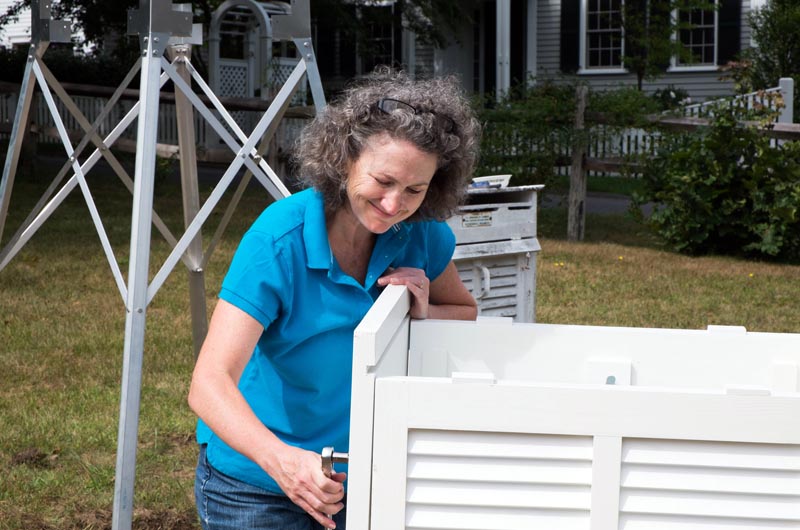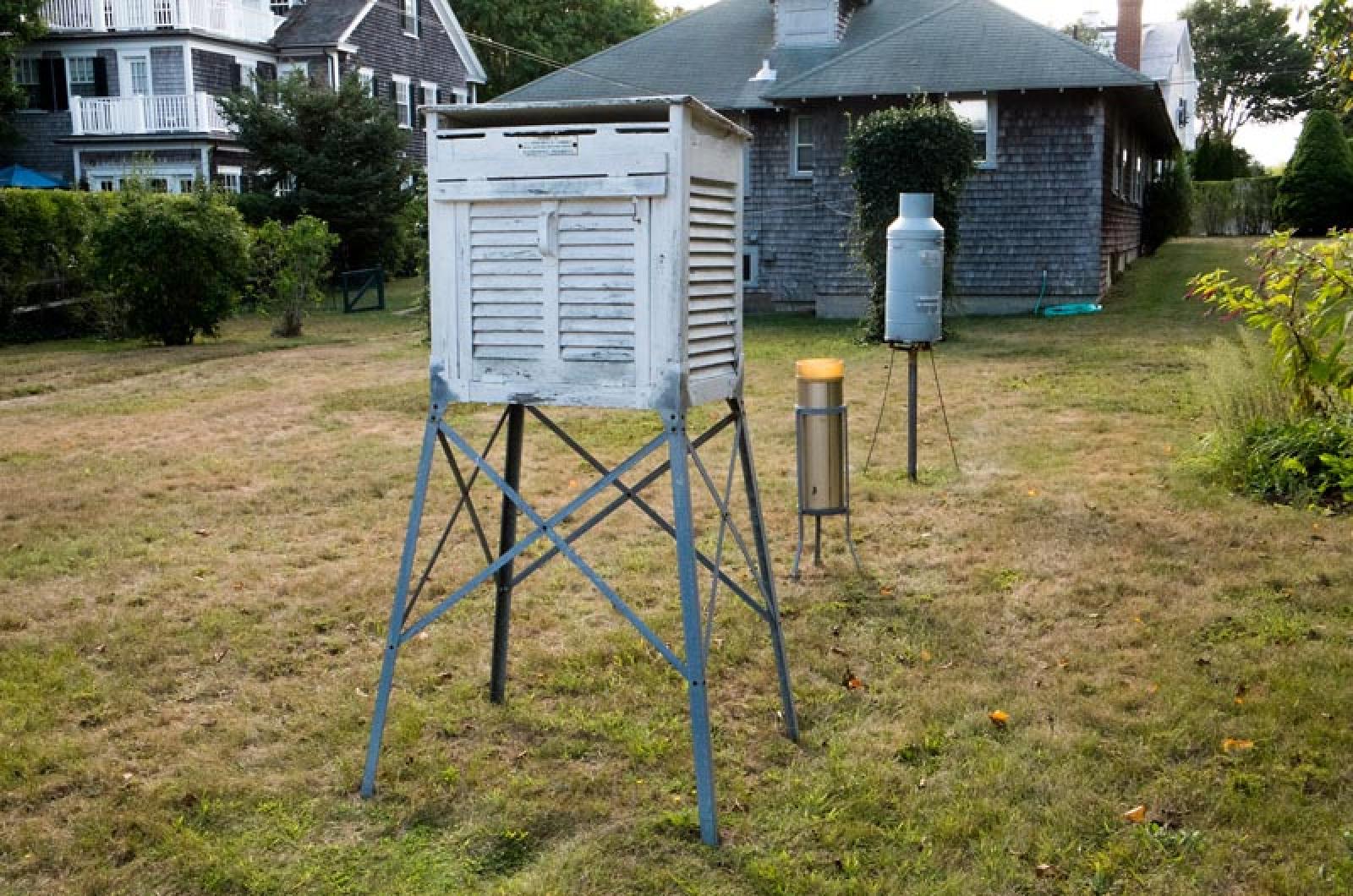Since 1946, high and low temperatures have been recorded on a daily basis in downtown Edgartown on the same late 19th century thermometers.
Through hurricanes, northeasters and snow storms, these glass and liquid instruments have persevered, their accuracy unwavering. Not so with the small wooden structure that guards the thermometers against the elements; it must be replaced regularly.
A changing of the guard took place on South Summer street Tuesday morning when a meteorologist with the National Weather Service came to check on the local rain gauges, thermometers and to replace the wooden station shelter.
Meteorologist Kimberly A. Buttrick journeyed to the Island from her hometown of Bourne by way of Taunton, where she picked up equipment at the region’s National Weather Service offices.
She services each of the 78 cooperative stations in her assigned region of southeastern New England about once a year.
The Vineyard station is likely the most remote. Nantucket does not currently have a cooperative service station, though they have an automated system set up at the airport.
They also have a team of spotters, who are citizen observers that volunteer to record data after a big storm event.

The Vineyard also has an automated system at its airport.
Though it’s more convenient to collect data from automated stations, they don’t perform well in winter weather.
The cooperative station stands in a treeless part of the backyard of the home belonging to Gazette reporter Mark Lovewell’s father in downtown Edgartown.
Unlike the airport weather station, which is situated on the tarmac, the cooperative station is in a more suburban location.
“We like to locate them where people live, play and work,” Ms. Buttrick said.
When the Vineyard weather station was first established, it was former Gazette owner and publisher Henry Beetle Hough who visited the thermometers in his yard, just a few blocks away from the current station. Mr. Lovewell took over for Mr. Hough in 1982.
Each month, climate observers have sent weather statistics for the previous month by mail to the National Weather Service.
In a narrative that accompanied his data for March of 1960, Mr. Hough described the month’s “weather atrocities” in great detail. A combination of gusty wind and heavy snow had wreaked havoc on the Island, threatening the beaches and birds and blocking roadways.
“Briefly, it was an awful month!” Mr. Hough wrote in conclusion.
These days, the data still reaches Taunton by mail, but it’s also entered into an internet database.
While many seek forecasting information from the National Weather Service, historical data is helpful to insurance companies, attorneys, snowplow businesses and regular citizens who want to know what happened during a major storm event.
For places like the Vineyard, where there is a lot of historic data available, meteorologists can make a statement about whether temperatures, rainfall or snowfall are considered normal for that time of year.
“Having a site that has longevity and the same location provides us with this normal data set,” Ms. Buttrick said.
Mr. Lovewell is one of a core group of volunteers across the region who report to weather stations on a daily basis and make these normal data sets possible.
In addition to recording the high and low temperatures of the preceding 24 hours, Mr. Lovewell also collects information on the amount and timing of the previous day’s rainfall. When it snows, he melts the snow down to measure its liquid content.
“I call them citizen soldiers of climate,” Ms. Buttrick said. “They are volunteers and their passion is to monitor the weather every day and put their stamp on climate.”
Modernized data collection technology is available, including automated wireless systems, but these systems don’t tend to be as reliable as the older equipment. For the cooperative stations, the weather service would rather use basic instruments that are consistent throughout the region.
“It doesn’t need to be high-tech equipment,” Ms. Buttrick said. “It’s antique but it works.”








Comments (2)
Comments
Comment policy »